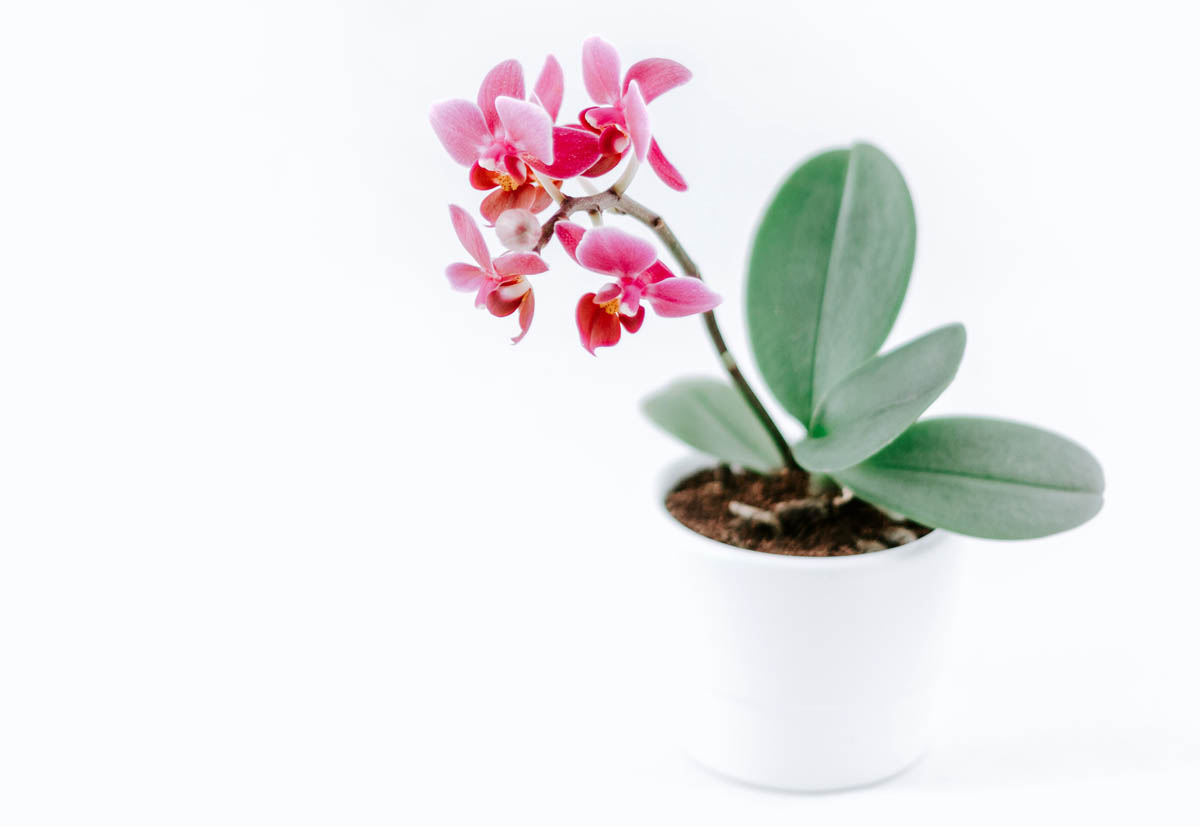Orchids (Orchidaceae) are a wide and diverse family of plants popular for their beautiful and often fragrant flowers. With 880 genera and 26,000 species, orchids are the second largest family of flowering plants after sunflowers.
Are orchids toxic to cats?
The ASPCA lists the Phalaenopsis, the most common species of orchid as non-toxic. Also known as moon or moth orchid, Phalaenopsis consists of 70 species.
Phalaenopsis have dark, wide, and flat leaves arranged opposite each other. The flower stem is long and arching and the long-lasting flowers come in shades of white, pink, red, green, yellow, orange, and purple.

Cypripedium spp. (lady slipper orchid) is a genus of 58 orchids which is labelled as toxic to humans, causing mild skin irritation. The toxic properties are unknown. The pouch-shaped petals set this orchid apart from other species.

Unfortunately, there is no information on other genera of orchid and their toxicity to cats. As a precaution, we recommend sticking with Phalaenopsis species which come in a wide variety of colours to choose from including white, pink, salmon, purple in one colour or speckled.
Other houseplants non-toxic to cats
While many houseplants are toxic to cats and should be kept out of the home, many plants are non-toxic to cats. The level of toxicity can range from mild and self-limiting to life-threatening (lilies are deadly to cats). Pet owners should always research the toxicity of plants before they bring them into the home.
Indoor plants non-toxic to cats:
- Christmas cactus (Schlumbergera spp.)
- Spider plant (Chlorophytum comosum)
- African violet (Saintpaulia spp.)
- Hypoestes (Hypoestes spp.)
- Wax plant (Hoya spp.)
- Cast-iron plant (Aspidistra elatior)
- Kentia palm (Howea forsteriana)
- Maidenhair fern (Adiantum spp.)
- Boston fern (Nephrolepis exaltata)
- Polka dot plant (Hypoestes spp.)
- Nerve plant (fittonia albivenis)
- Bamboo (Bambusoideae spp. )
- Pilea (Pilea spp.)
- Venus fly trap (Dionaea muscipula)
- Air plant (Tillandsias)
- Zebra cactus (Haworthia margaritifera)
- Golden cane palm (Dypsis lutescens, chrysalidocarpus lutescens)
- Ponytail palm (Beaucarnea recurvata)
- Bromeliads (Neoregalia spp.)
- Burro’s tail (Sedum morganianum)
- Prayer plant (Calathea spp.)

